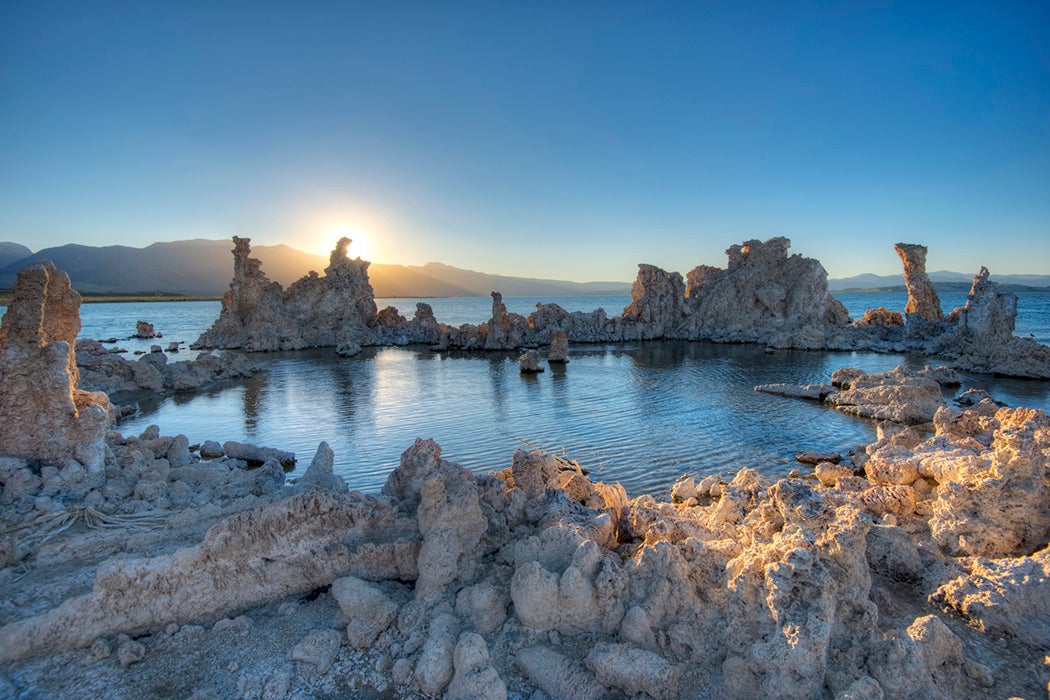While Earth’s oceans are plagued by plastic pollution and warming waters, they aren’t the only seas on our planet that will be adversely impacted by climate change.
Salty, landlocked lakes, commonly called inland seas, are salinated due to their geological history. For a salt lake to develop, the lake must be at the terminal point of a closed drainage system. In other words, the lake receives inflow water but has no strong outflow. Whatever water is lost from the lake due to evaporation or seepage through sediments must be balanced by water arriving from rivers, streams, springs, or precipitation.
These saline environments, which most often occur in arid and semi-arid regions (cold or hot), provide essential habitat for a diverse and highly specific group of organisms, such as local and migratory bird species as well as microscopic communities. But human activity, including mining, pollution, diversion of rivers, and groundwater pumping, threatens this delicate saline balance.
In 2002, British-Australian limnologist W. D. Williams explored the threats to these ecosystems and considered what their future might look like in what must have seemed like a distant year, 2025. According to Williams, the effects of human activities at the time were “geographically widespread, mostly irreversible, and degrade[d] the values of salt lakes.”
The threats to salt lakes Williams noted were largely due to human activity. The usual slew of human-caused effects, such as acid rain and pollution, negatively affected salt lakes, just as they did freshwater ones. However, salt lakes had their own set of problems. Due to agricultural demands, flowing inland waters often were diverted for irrigation purposes. Not only did this impact water levels in observed salt lakes, it also impacted salt levels. Salinity increased as the lakes shrank through a process known as anthropogenic salinization.
Increased salt levels threatened vegetation especially, which was highly adapted to the existing saline environments. The diversion of rivers for the irrigation lowered water levels in inland seas worldwide, from Jordan to the United States. Over time, diversion of water was causing lakes to disappear, most famously in Nevada (Winnemucca Lake) and California (Owens Lake). Where Owens Lake once shimmered, a vast, dusty plain emerged that requires managers to take measures to control for dust emissions.
As threatening as water-level changes were, Williams suggested that, of the human activities that were making an impact on lake beds, mining was the most important. Extraction of various minerals and salts, whether from surface deposits or via subsurface activity, led to intense damage of the lake structure that often was not managed or repaired. Not only did mining render the lake bed unstable, but it also added pollutants to the water through oil spills from mining rigs and discharge of waste. Both of these scenarios affected the health of the Caspian Sea, for example.
Williams argued that awareness of these distinctive ecosystems was of the utmost importance to protect them. “Already, many salt lakes have been impacted and degraded, almost all irreparably… There is little doubt that by 2025 the natural character of most of the world’s salt lakes will have changed.”
Unfortunately, concluded Williams, a lake’s aesthetic, cultural, economic, recreational, scientific, conservation, and ecological values often go unrecognized until its too late. This was particularly true for the Aral Sea: once the fourth largest lake in the world, it became significantly smaller after two of its inflow rivers were diverted. The Aral Sea’s ecological values “only became clear when it had significantly shrunk in size and increased in salinity following anthropogenic disturbance.” With the shrinking lake came a decrease in biodiversity, the collapse of regional fisheries, and a new source of windblown dust and salt.
Weekly Newsletter
Even though he made them twenty years ago, many of Williams’s arguments remain valid today. Anthropogenic climate and atmospheric changes, together with other human activities, greatly disrupt the ecological balance of inland seas. But even two decades ago, Williams was considering the possibility of positive change, using Mono Lake as “an example of what can be achieved in the conservation of salt lakes.” When threatened by the diversion of surface inflow waters, public interest in the degrading environment led to the stabilization of the lake’s water levels. In 2002, Williams saw it as “the central landscape feature in an area visited increasingly by national and international tourists for its natural beauty.”
While hopeful, Williams recognized the future of inland seas was precarious. “The conservation of Mono Lake was difficult,” he admitted, and “the conservation of other salt lakes is likely to be even more difficult.”
Professor W. D. (Bill) Williams died in 2002, shortly after the paper discussed here was accepted for publication.







